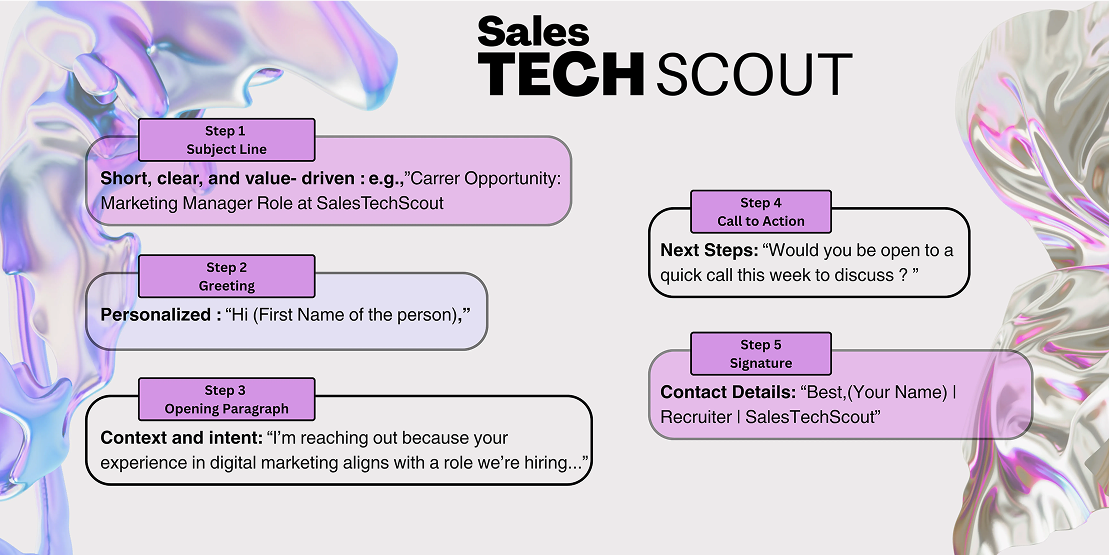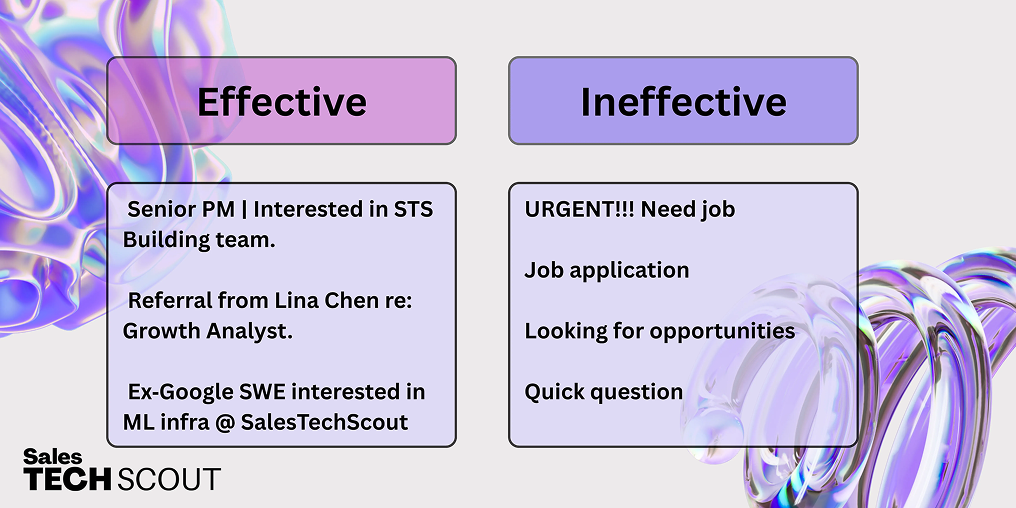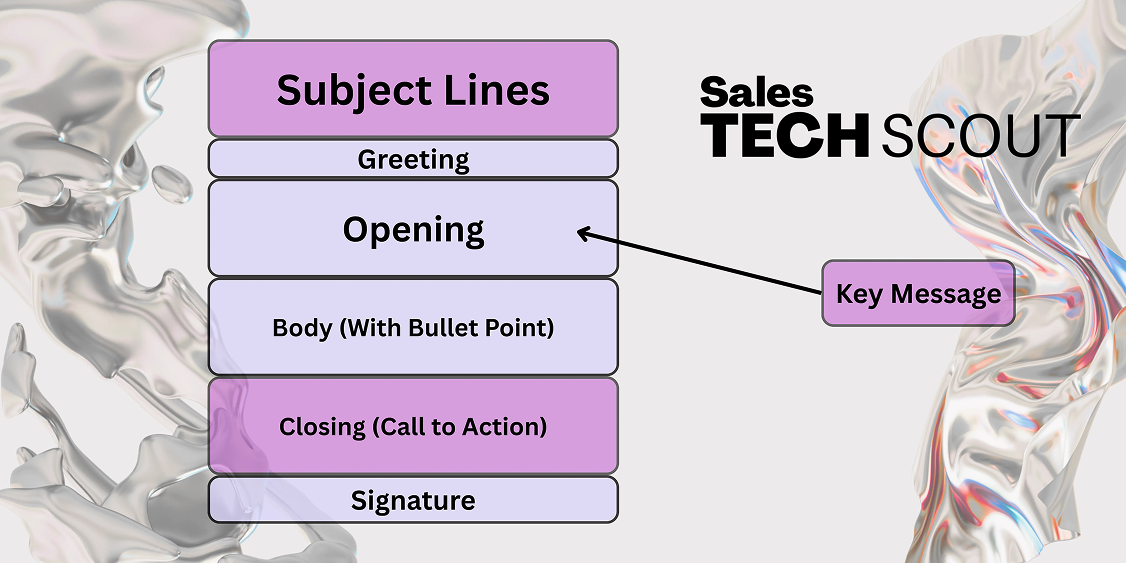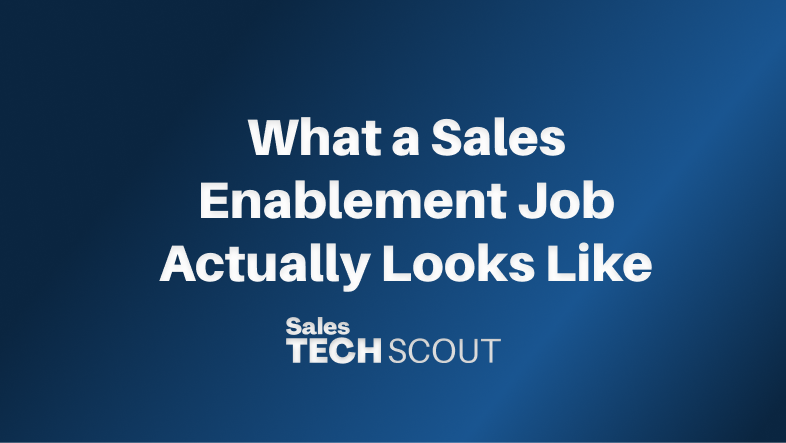How to Email a Recruiter (Cold) and Get a Response


Introduction
Landing a job in competitive industries often requires going beyond traditional applications. Cold emailing a recruiter should be short, respectful, and tailored to their open roles. When done correctly, a well-crafted email recruiter outreach can bypass crowded applicant pools and create direct conversations with hiring decision-makers. Your subject line is 80% of your success when reaching out cold, making first impressions critical.
This guide breaks down proven strategies for writing personalized cold email messages that recruiters actually read and respond to, covering everything from subject lines to follow-up timing.
Understanding Recruiter Cold Email Fundamentals
Why Cold Emailing Recruiters Works
Cold outreach to recruiters remains effective because it demonstrates initiative, confidence, and genuine interest in specific roles. Unlike mass job applications, a targeted email recruiter message shows you've researched their company and understand what they need.
Recruiters receive hundreds of generic applications but only a handful of thoughtful, personalized cold email messages. This scarcity makes quality outreach stand out immediately. Additionally, cold emails allow you to control your narrative, highlight relevant experience upfront, and bypass automated applicant tracking systems that filter out qualified candidates.
When to Send a Job Application Email vs Cold Email
Timing matters significantly in recruiter outreach strategy. Send a job application email through official channels when a position is publicly posted and requires formal submission. Use cold email when you've identified recruiters through LinkedIn who work in your target industry but haven't posted relevant openings recently, or when you want to introduce yourself proactively before positions become available.
Cold emails work best for passive job seekers exploring opportunities, career changers needing to explain their pivot, or candidates targeting specific companies without active postings.
What Recruiters Actually Look For
Recruiters prioritize candidates who demonstrate clarity, professionalism, and relevant qualifications in their initial outreach. They want to see specific skills matching their current or anticipated needs, evidence of cultural fit, and realistic salary expectations.
Effective email recruiter messages highlight 2-3 key accomplishments directly related to the recruiter's focus area, avoiding generic statements like "I'm a hard worker" or "I'm passionate about your company." Recruiters also value brevity because they process dozens of emails daily, making concise, scannable formats essential.
Crafting Your Email Subject Line
Why Your Email Subject Determines Open Rates
The email subject line functions as your entire message's gatekeeper. Recruiters scan subject lines in seconds, deciding whether to open, skip, or delete based purely on those few words. Research shows that personalized subject lines increase open rates by 50% compared to generic ones.
Your subject line must immediately communicate value, relevance, and professionalism while avoiding spam triggers like excessive punctuation or all caps. Consider it your elevator pitch condensed into 5-7 words that answer the recruiter's implicit question: "Why should I care about this email right now?"

Proven Subject Line Formulas That Get Opens
High-performing subject lines follow tested patterns that balance personalization with clarity. Examples include: "Experienced [Your Role] interested in [Company Name] opportunities," "[Mutual Connection] suggested I reach out about [Role]," or "Question about [Specific Team/Project] roles at [Company]." Including the company name, specific role title, or mutual connection significantly boosts open rates.
Avoid vague subjects like "Job inquiry" or overly clever attempts at humor that fall flat in professional contexts. Numbers and specifics also perform well: "5 years in SaaS sales | interested in your Enterprise team" immediately communicates experience level and target.
Common Subject Line Mistakes to Avoid
Generic subject lines like "Resume for your consideration" or "Job application" signal mass outreach and get ignored immediately. Overly long subjects get truncated on mobile devices, losing critical context. Using urgent language ("URGENT: Need job ASAP") appears desperate and unprofessional. Similarly, deceptive subjects that don't match email content damage credibility instantly.
Avoid internal jargon the recruiter might not recognize, and never leave subject lines blank. Test your subject line by reading it from the recruiter's perspective: does it clearly explain why they should prioritize this email over 50 others in their inbox?
Writing a Personalized Cold Email That Converts
Opening Lines That Grab Attention
Your first sentence must immediately establish relevance and credibility. Strong openings reference specific details about the recruiter's recent posts, company news, or portfolio that demonstrate genuine research. Examples: "I noticed you recently placed candidates at [Company] in senior product roles" or "Your LinkedIn post about hiring challenges in tech sales resonated with me."
Avoid generic greetings like "I hope this email finds you well" that waste valuable space. Get straight to the point: who you are, why you're reaching out, and what makes you relevant to their work. Personalization here isn't optional; it's the difference between getting read and getting deleted.

Structuring Your Email Body for Maximum Impact
Effective email recruiter messages follow a proven three-paragraph structure. Paragraph one establishes context and credibility in 2-3 sentences. Paragraph two highlights 2-3 specific, quantifiable achievements directly relevant to the recruiter's focus area. Paragraph three includes a clear call-to-action and expresses flexibility about timing. Keep total length under 150 words; recruiters skim rather than read deeply. Use bullet points to highlight key qualifications, making emails scannable.
Each sentence should serve a purpose: establishing fit, demonstrating value, or advancing the conversation.
Remove any sentence that doesn't directly support your candidacy or answer the recruiter's implicit question: "Why should I talk to this person?"
Closing With a Clear Call-to-Action
Weak closings leave recruiters uncertain about next steps, reducing response rates significantly. Strong calls-to-action provide specific options while respecting the recruiter's time.
Examples: "Would you have 15 minutes next week for a brief call?" or "I'd appreciate any guidance on upcoming roles matching my background." Avoid passive endings like "I look forward to hearing from you" without suggesting concrete next steps. Include your phone number and LinkedIn profile link in your signature for easy follow-up.
Express flexibility: "I'm happy to work around your schedule" shows professionalism. Close with confidence but not presumption; you're suggesting a mutually beneficial conversation, not demanding attention.

Leveraging LinkedIn to Email Strategies
Finding Recruiter Contact Information
Most recruiters include email addresses in their LinkedIn profiles, company websites, or professional bios. When email isn't listed, use tools like Hunter.io, RocketReach, or Apollo.io to find verified addresses based on company domain patterns.
LinkedIn Sales Navigator provides advanced filtering to identify recruiters by industry, company size, and specialty. Join industry-specific LinkedIn groups where recruiters actively participate and share contact information. Company "About" pages often list talent acquisition teams with direct emails.
Always verify email addresses before sending to avoid bounces that damage sender reputation. If you can't find a direct email, LinkedIn messaging serves as an alternative, though response rates typically lag behind direct email.
Connecting Before Emailing
Establishing a LinkedIn connection before cold emailing significantly improves response rates by creating familiarity. Send a personalized connection request mentioning a specific reason: "I'm exploring opportunities in fintech sales and would value your insights."
Once connected, engage with their content by leaving thoughtful comments on posts before sending your job application email. This multi-touch approach makes your name recognizable when your email arrives. However, don't send identical messages via LinkedIn and email simultaneously; choose one channel first, wait 5-7 days, then follow up through the other if needed. Some recruiters prefer LinkedIn messages for initial contact, while others favor email; check their profile for preferences.
Referencing LinkedIn Activity in Your Email
Personalized cold email messages that reference specific LinkedIn activity demonstrate genuine interest and research effort. Mention a recent article they shared: "Your post about remote hiring trends in cybersecurity aligned with my experience managing distributed teams." Reference their company's recent funding, product launch, or expansion news: "I saw [Company] just opened a Seattle office and I'm relocating there next month."
These connections make your email feel like a natural continuation of their professional presence rather than generic outreach. Recruiters appreciate candidates who understand their work context and current priorities. This approach transforms your email recruiter message from cold to warm, dramatically improving response likelihood.
Optimizing Email Timing and Follow-Up
Best Days and Times to Send Recruiter Emails
Email timing significantly impacts open and response rates. Studies show Tuesday through Thursday mornings (8-10 AM in the recruiter's time zone) generate highest open rates because recruiters process emails at the start of their workday before meetings fill their calendars. Avoid Mondays when inboxes overflow from weekend accumulation, and Fridays when attention shifts toward weekend planning.
Sending between 6-8 AM captures early-morning email checkers, while 12-1 PM reaches those who review messages during lunch. Avoid sending outside business hours; late-night emails appear desperate and weekend messages get buried under Monday's influx. Consider the recruiter's industry; tech recruiters might check email later, while corporate recruiters follow traditional 9-5 schedules.
Following Up Without Being Annoying
Most job seekers quit after one email, missing opportunities from strategic follow-up. Send your first follow-up 5-7 business days after initial outreach, referencing your previous message briefly: "I wanted to follow up on my email from last week about [specific role/topic]." Keep follow-ups even shorter than originals, around 50-75 words.
A second follow-up 7-10 days later is acceptable, but stop after two follow-ups to avoid appearing pushy. Each follow-up should add new value: mention a relevant recent accomplishment, share an article related to their focus area, or reference new job postings. If you get no response after three touchpoints (initial email plus two follow-ups), move on and try again in 2-3 months.

Tracking Email Performance
Use email tracking tools like Mailtrack, HubSpot Email Tracking, or Yesware to monitor opens, clicks, and engagement timing. Tracking reveals whether your subject lines drive opens and whether recruiters read your full message or skim quickly. If emails get opened multiple times without replies, your content likely needs improvement.
Low open rates signal weak subject lines requiring adjustment. Test different approaches: send similar emails with varying subject lines or opening paragraphs to different recruiters, then analyze which versions perform better.
Track response times to identify optimal follow-up windows. Maintain a spreadsheet logging recruiters contacted, response status, and follow-up dates to prevent duplicate outreach and maintain professional follow-up cadence.
Common Cold Email Mistakes and How to Fix Them
Generic Templates That Kill Response Rates
Recruiters instantly recognize mass-sent templates lacking personalization, and they delete them immediately. Phrases like "To whom it may concern," "I'm reaching out to express my interest in opportunities at your company," or "I'm a motivated self-starter" scream template usage. These generic email recruiter messages demonstrate zero research effort and suggest you're sending identical emails to hundreds of recruiters. Fix this by researching each recruiter's specialty, recent placements, and current company priorities, then customizing your opening paragraph completely. Reference specific details unique to that recruiter: their LinkedIn posts, recent company news, or mutual connections. Even if you use a base template, personalize at least 40% of the content for each recipient.
Focusing on What You Want Instead of What You Offer
Weak cold emails emphasize the sender's needs: "I'm looking for a job in marketing," "I need help finding opportunities," or "I'm hoping you can review my resume."
These messages frame the conversation around what the recruiter can do for you rather than the value you bring. Recruiters work for companies, not job seekers; their priority is finding candidates who solve hiring problems. Reframe your job application email around value: "I've grown SaaS ARR by 40% in my last two roles and noticed you recruit for similar positions," or "My background in enterprise security sales aligns with your recent posts about hard-to-fill roles."
Position yourself as a solution to their recruitment challenges, not someone asking for favors.
Attachments, Links, and Other Technical Mistakes
Never attach resumes to cold emails; attachments trigger spam filters and make recruiters hesitant to open files from strangers. Instead, offer to send your resume upon request or include a Google Docs link with appropriate viewing permissions. Broken LinkedIn links, typos in the recruiter's name, or incorrect company names destroy credibility instantly. Test all links before sending by clicking them yourself.
Avoid excessive formatting like multiple colors, unusual fonts, or large images that display poorly on mobile devices where 60% of emails get opened. Keep emails plain text or minimal HTML. Double-check the recruiter's name spelling and company name; errors here signal carelessness that recruiters interpret as lack of attention to detail in your work as well.
Mastering the Art of Email Recruiter Outreach
The difference between cold emails that get responses and those that get deleted lies in personalization, clarity, and timing. Effective email recruiter strategies combine thorough research, concise messaging, and strategic follow-up to create conversations that lead to interviews. Your email subject line must immediately communicate value while your opening lines demonstrate genuine interest in the recruiter's work.
Structure your message to highlight specific, quantifiable achievements relevant to their focus area, then close with a clear call-to-action that respects their time. Leverage LinkedIn to identify the right recruiters, verify contact information, and establish familiarity before sending your personalized cold email.
Time your outreach for maximum visibility and follow up strategically without crossing into persistence. Avoid generic templates, focus on value you offer rather than what you need, and eliminate technical mistakes that trigger spam filters. Master these fundamentals, and your cold emails will consistently generate the recruiter responses that advance your career.
Subscribe to Our Newsletter
To Never Miss a Thing






.avif)


